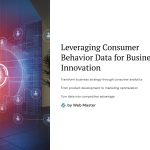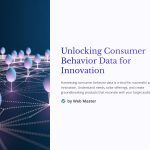 From product development to marketing optimization, consumer behavior data is rapidly becoming the driving force behind transformative business strategies. In a world of accelerating digital interactions, companies can no longer rely on assumptions—they must rely on analytics. This post dives deep into how top companies analyze consumer behavior to spark innovation, reduce risk, and outperform competitors. We’ll explore real-world examples and practical takeaways for any business aiming to turn data into competitive advantage.
From product development to marketing optimization, consumer behavior data is rapidly becoming the driving force behind transformative business strategies. In a world of accelerating digital interactions, companies can no longer rely on assumptions—they must rely on analytics. This post dives deep into how top companies analyze consumer behavior to spark innovation, reduce risk, and outperform competitors. We’ll explore real-world examples and practical takeaways for any business aiming to turn data into competitive advantage.

Understanding the Power of Consumer Behavior Data
Consumer behavior data includes every measurable action a customer takes—clicks, purchases, search patterns, time spent on pages, social media interactions, and more. The real power lies not just in collecting this data, but in interpreting it in ways that reveal motivations, preferences, and unmet needs. With the rise of AI and machine learning, businesses now harness this data to make highly precise decisions, from product features to pricing strategies.
For instance, Netflix analyzes viewer habits to decide which content to produce. By studying when users pause, rewind, or stop watching, they not only personalize recommendations but also plan billion-dollar content investments. Similarly, Amazon leverages purchase history and browsing behavior to power its recommendation engine, which reportedly generates 35% of its revenue.

Case Study: Starbucks’ Real-Time Personalization Strategy
Starbucks is a prime example of innovation driven by consumer behavior data. With over 30,000 stores globally and a strong digital app user base, Starbucks uses real-time data to tailor promotions and product recommendations for individual customers. Their AI-driven Deep Brew system considers previous orders, time of day, location, and even weather to customize offers.
This strategy doesn’t just improve user satisfaction—it directly increases spending per visit. Their personalized marketing campaigns have resulted in a double-digit lift in revenue from loyalty members. Importantly, their system ensures that personalization feels relevant, not invasive, which helps build long-term trust.

Retail Innovation: How Target Predicted Pregnancy Before Customers Told Them
One of the most cited (and controversial) uses of consumer data is Target’s pregnancy prediction algorithm. By tracking purchases of unscented lotions, vitamins, and cotton balls, Target was able to identify women likely to be pregnant—even before they had publicly disclosed it. This allowed for precisely timed marketing campaigns, sending coupons for baby products at key stages of pregnancy.
While this strategy was commercially effective, it also sparked a nationwide debate about data privacy and ethics. The key lesson: while data can enable incredible insights, companies must balance personalization with transparency and consumer respect.

B2B Applications: GE’s Predictive Maintenance
General Electric (GE) revolutionized industrial equipment maintenance using behavioral data from machines. By embedding sensors in jet engines, wind turbines, and factory equipment, GE collects massive amounts of usage data. Through predictive analytics, they anticipate failures before they happen, minimizing downtime and optimizing maintenance schedules.
This data-driven approach is not just reactive but predictive, saving millions in costs while improving customer satisfaction. It demonstrates that consumer behavior data isn’t just for B2C companies—it’s equally transformative in B2B sectors when viewed through the lens of user interaction.

Ethics and Privacy: The Fine Line of Data Usage
With great data comes great responsibility. As more companies rely on consumer behavior data, public concern over surveillance and misuse continues to rise. Recent regulations like GDPR and CCPA highlight a growing demand for transparency and consent.
Companies must not only comply with legal standards but also build trust through ethical practices. This includes anonymizing data, offering clear opt-ins, and being transparent about how data is used. The businesses that succeed will be those that prioritize user trust as much as data efficiency.

Future Outlook: AI-Driven Personalization at Scale
Looking forward, AI and data analytics will become even more integral to business innovation. Companies will deploy real-time personalization at scale, not just in marketing, but in product development, customer support, and operational efficiency.
Imagine a retail experience where every touchpoint—from website navigation to product packaging—is dynamically adjusted to individual consumer behavior. This isn’t science fiction—it’s already being tested. Businesses that invest in data infrastructure today will be tomorrow’s leaders in hyper-personalized commerce.
*Capturing unauthorized images is prohibited*







